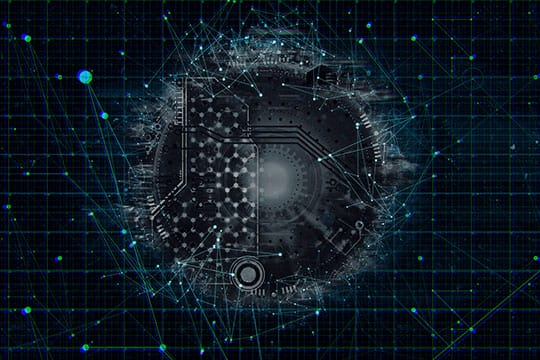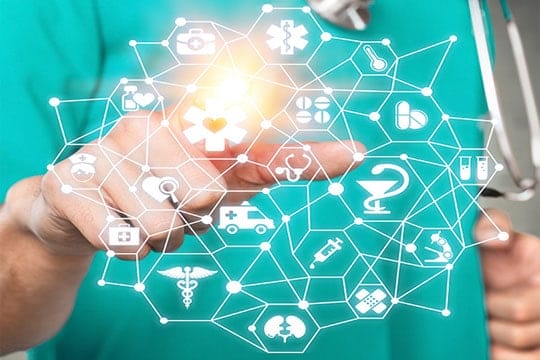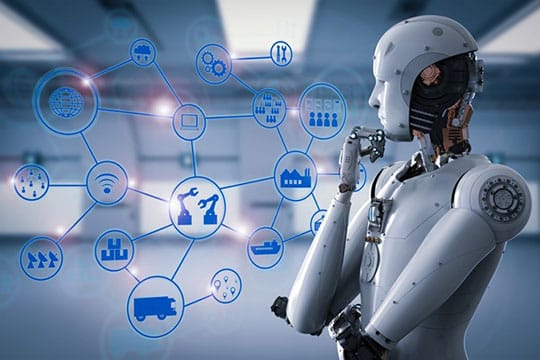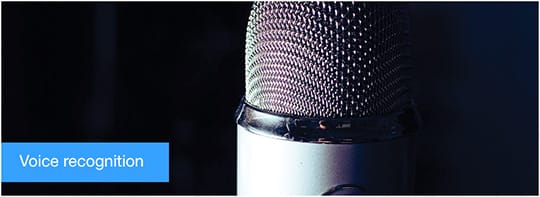With the advent of big data and ML technologies, a large and unprecedented amount of information became accessible. Before these technologies, we had to calculate or deduct the data we needed. Stemming from reliable resources, this data has surely changed the world for the better. Today, we can glean more profound operational insights and even solve some of mankind’s most pressing issues. With the help of cutting-edge technologies, businesses can drive efficiencies and get value-add benefits unheard of before.
Put simply, today we have the knowledge. Therefore, our objective shifted from gathering single crumbs of information to crunching the data that we already have galore.
Pattern recognition symbolizes the essence of big data analysis by creaming the valuables off data and tapping into the substance unknown before. This technology provides a competitive edge to companies. It allows businesses to improve continuously and keep up with the evolving market. But what is pattern recognition and how can it help develop your business?
What is Pattern Identification?

Pattern Recognition is a branch of ML that is devoted to the recognition of uniformities and patterns in data. Through identifying patterns, we are able to claim predictions and foresee byways. The data is distinguished and sectioned in accordance with specific benchmarks or similarities.
Pattern recognition lays the foundation for problem-solving and producing algorithms. The generalization allows us to sieve redundant information to tackle the problem.
Pattern recognition is a universal technique. It is omnipresent. We can spot it in cybersecurity, ML, and AI. In fact, we humans have always been doing that. Remember when parents or teachers taught you the alphabet? They said, “A, B, C” and after several repetitions, when they said, “A, B…”, you responded with “C”. You recognized the pattern. The only difference today is that we are teaching computers to do it faster.
In general, the data may come in all forms, including:
- Text.
- Numbers.
- Multimedia.
- Sentiments, and others.
Pattern recognition can help process any data of linear nature and transform sequences into understandable and empirical knowledge.
Recommended for you: Use of Artificial Intelligence (AI) in the Modern UI & UX Design.
Pattern Recognition Techniques

The pattern recognition models can be divided into several types according to the method used for data analysis and categorization. A pattern recognition task can incorporate one or multiple models at the same time.
Pattern recognition models are as follows:
Statistical

This model refers to the application of statistical techniques for studying data measurements to retrieve information and make a reasoned decision. It is a very active area of research, which has evolved in recent years. The statistical model uses supervised ML;
Structural

This model comes in handy with complex pattern recognition problems, like multidimensional objects. A marvelous example of applying the structural model is unraveling the intricate relationships between parts of speech. Unlike the first model, this one makes use of semi-supervised ML;
Template Matching

This model is the simplest and most primitive among others. Template pattern recognition is used to find the similarities between the two samples. Have you ever used plagiarism checkers? Yes, this is also a template matching.
Other pattern recognition models include a neural network-based model, a fuzzy-based model, and a hybrid model.
Introducing Pattern Recognition

Most pattern recognition processes in AI operations do exactly what their name implies. However, lots of things do not lay beneath the surface.
In general, all pattern identification algorithms consist of two important parts:
- explorative part – when algorithms are searching for general patterns.
- descriptive part – when algorithms start to categorize the patterns in a specific way.
Combined, these two constituents help derive insights that can be used in data analytics afterward. The analysis of the similarities and their relationships reveals facts that add to the general understanding of the issue in question.
Pattern recognition has been continuously improved for many years. There are lots of methods driving the development of various apps in numerous niches. The main steps of pattern recognition include preprocessing, feature extraction, and classification.
Therefore, pattern recognition is done the following way:
- Data is accumulated from its sources.
- Data is polished by cutting excessive bits of information.
- Information is analyzed for important highlights or standard components.
- These components are in this way gathered in particular sections.
- The sections are monitored for insights into sets.
- The extricated bits of knowledge are applied to business activity.
Use Cases for Pattern Recognition

You may like: Technology Digging on Deep Data: A Real-World Global Treasure Hunt.
Data Analytics

Stock market prediction helps businesses forecast the future value of company stock and other financial tools. Historically, the art of stock market forecasting has been a challenging task for researchers and analysts.
It’s common knowledge that such markets can be volatile. Therefore, keeping an eye on future trends using benchmarks is a priceless tool that can’t be neglected. With the use of Data Analytics, you can calculate virtually anything with ease. In this case, traders get a more profound and thorough analysis of how a market is about to shift.
You can never be 100% sure of ever-evolving markets. Yet, the received trend indicators allow making more reasonable decisions backed up by data.
Data Analytics and pattern recognition are often used interchangeably in this context.
Let’s have a look at some well-known cases where data analytics and pattern recognition are intertwined:
- Audience research – pattern recognition is used for crunching accessible user data and classifying it according to chosen parameters. Google Analytics offers these parameters.
- Stock market forecasting – as stated above, it is used for determining the stock price by analyzing specific patterns observed in the past. You can see this type of analysis in YardCharts.
![Pattern Recognition]() Natural Language Processing
Natural Language Processing

Natural Language Processing has been piquing our interest for quite a long time. NLP is an area of computer science that focuses on the linguistic interaction between man and machine.
Thanks to breakthroughs in machine learning (ML) over the last decade, we have seen major improvements in speech recognition and machine translation. Language generators are already good enough to write craft decent news articles, and virtual assistants like Siri and Alexa are becoming part of our daily lives.
NLP use cases include:
- text summarization,
- translation,
- keyword generation,
- sentiment analysis,
- chatbots,
- plagiarism checkers,
- text correction.
In practice, the process of natural language processing begins with Lexical analysis, also known as Tokenization, which divides the text into paragraphs, sentences, and words. After that, Syntactic analysis, or parsing is carried out. Parsing examines a sentence word by word, to generate a structural explanation of a sentence, usually in a form of a tree.
It uses rules of context-free grammar to recognize the part of speech, and so on. This helps to identify how words correlate. Once we know the structure of a sentence, we can proceed with defining its meaning.
This is the most tricky part because NLP can be quite vague. A sentence can be interpreted in various ways.
The semantic analysis provides a context-independent interpretation, or put simply, a meaning without knowledge of the other sentences.
The result is called a logical form. At this point, there still may be some level of uncertainty, so we turn to Pragmatic analysis.
Pragmatic analysis can infer a better interpretation of the sentence by comparing the previous and succeeding sentences. It also applies real-world knowledge.
For instance, an apple is a fruit, cats can purr, and so on. At last, it is important that sometimes, syntactic analysis, semantics, and pragmatics aren’t completed in a sequential manner, but rather simultaneously.
Although NLP is a relatively newborn area, we have moved forward a lot over the last few years. With ML and deep learning breakthroughs, it will be captivating to observe the way humans and machines communicate with each other evolves.
Optical Character Recognition

Optical Character Recognition (aka OCR) is one of those systems that allow us to scan printed, typewritten or hand-written text and convert scanned into a computer processable format.
Once recognized, the documents can be edited, used, or reused in other documents. The basic recognition process includes text study and character translation into code that can be used for data processing. OCR is also sometimes called text recognition.
For more complex recognition tasks, people use intellectual recognition systems, such as artificial neural networks. A standard MNIST database consisting of handwritten digit images has been created for the text recognition systems calibration (wiki).
In any case, the backbone of OCR is a synthesis of In the heart of OCR is pattern recognition and comparative algorithms aligned with the benchmark data.
Among the well-known OCR use-cases are:
- Text Transcription is the most common OCR application. The content displayed is recognized and rendered into the computer environment. We’ve all used ABBYY Fine Reader at least once.
- Handwriting Recognition is a variety of text recognition with a more noteworthy accentuation on the visual component. The OCR utilizes a comparative analysis to render the handwriting sample. An excellent use case of this is Google Handwriting Input.
- Document Classification includes further processing of the doc and pays greater attention to its structure and format. This process is used for the digitization of the paper documents and also for the reproduction of the disordered parts of the damaged documentation. Parascript software, for example, helps convert documents into structured data.
![Pattern Recognition]() Image Pattern Recognition
Image Pattern Recognition

Image Recognition is a technology created to catch, analyze, understand, and process images from the real world in order to convert them into digital information. This area involves intelligent data analysis, machine learning, pattern recognition, expanding the knowledge base.
Developments in this field have led to the fact that computers and smartphones have become capable of imitating human vision. Advanced cameras in modern devices can take very high-quality photos, and with the help of new software, the necessary information is extracted from them, and images are processed on the basis of the received data.
The recognition algorithms involve convolution neural networks – a special architecture of artificial neural networks, which is designed for effective recognition of images. Their principle of operation consists of an alternation of convolution and sub-sampling layers. In the process of convolution, each piece of the image is multiplied by the convolution matrix in fragments, then the result is summed up and recorded in a similar position of the output image.
Let’s have a look at the following most common use cases:
- Visual Search features are the technology that uses screenshots, Internet images, etc as a search basis. These features are widely known in online marketplaces and search systems.
- Face Detection is one of those technologies that polarize people. It is an automatic localization of a human face on an image or video and, if necessary, identification of a person’s personality based on available databases. Interest in these systems is very high due to the wide range of tasks that they perform. We can spot this technology in social media or law enforcement.
![Pattern Recognition]() Voice Recognition
Voice Recognition

Voice recognition is an element of the speech processing process. Its main purpose is to provide a convenient dialogue between the user and the machine. In the broad sense, we are talking about systems that perform phonemic decoding of speech acoustic signals when pronouncing speech messages with freestyle.
In the narrow sense, voice recognition systems facilitate the solution of private problems by imposing some restrictions on the requirements for the recognition of naturally sounding speech in its classical sense.
Thus, this technology extends from simple stand-alone devices and children’s toys that are able to recognize or synthesize separately pronounced words, numbers, cities, names, etc., to super-complex systems of natural speech recognition and its synthesis for use, for example, as a secretary assistant (IBM VoiceType Simply Speaking Gold).
Let’s have a closer look at voice and sound recognition use cases:
- AI Assistants / Personal Assistant applications use natural language processing and sound databases to compose and perform the message. An excellent example here is Google Assistant;
- Sound-based Machine Fault Diagnosis – the system analyzes and recognizes the signals produced by the machines to detect faults and offer possible ways of fixing them.
- Automatic Captioning addition includes speech-to-text identification and following picture overlay to introduce the content on the screen. YouTube automatic subtitling feature is a good example of this technology.
Sentiment Analysis

Sentiment Analysis is a process of computationally identifying and categorizing opinions from a piece of text. It is also a process of determining whether the writer’s attitude towards the topic is positive, negative, or neutral. Sentiment analysis is one of the most elaborate varieties of pattern recognition.
Businesses can implement sentiment analysis to fetch valuable customer insights and feedback. In this case, unsupervised ML helps sentiment analysis carry out the identification.
This type of pattern recognition is usually based on credible sources like dictionaries and may also use more customized databases if needed.
The use cases for sentiment analysis are the following:
- Audience Research, content optimization – these subtypes of sentiment analysis are used for researching your target audience including habits, attitudes, and so on. They also help businesses optimize their content. Salesforce’s Einstein platform services are textbook examples of sentiment analysis.
- Service Support – processes designed to ensure the operational efficiency of service. AI assistants like Alexa and Siri use this type of sentiment analysis;
- Prescription / Recommendation – created to prognosticate the field of interest for the potential customer. The prediction can also be based on search history and queries. We have all seen ‘you might also like’ on various platforms.
You may also like: Artificial Intelligence Aided Machine Learning – The Future of Reality.
In Conclusion

Pattern Recognition is a fascinating and rapidly evolving field, which underpins developments in such areas as computer vision, text and document processing, and other networks. With its help, data analytics will achieve further progress and we can all take advantage of its applications in fast emerging areas. As you can see from our article, pattern recognition is a multifaceted technology, therefore, it is worth implementing in your business if you want to reap awards.






